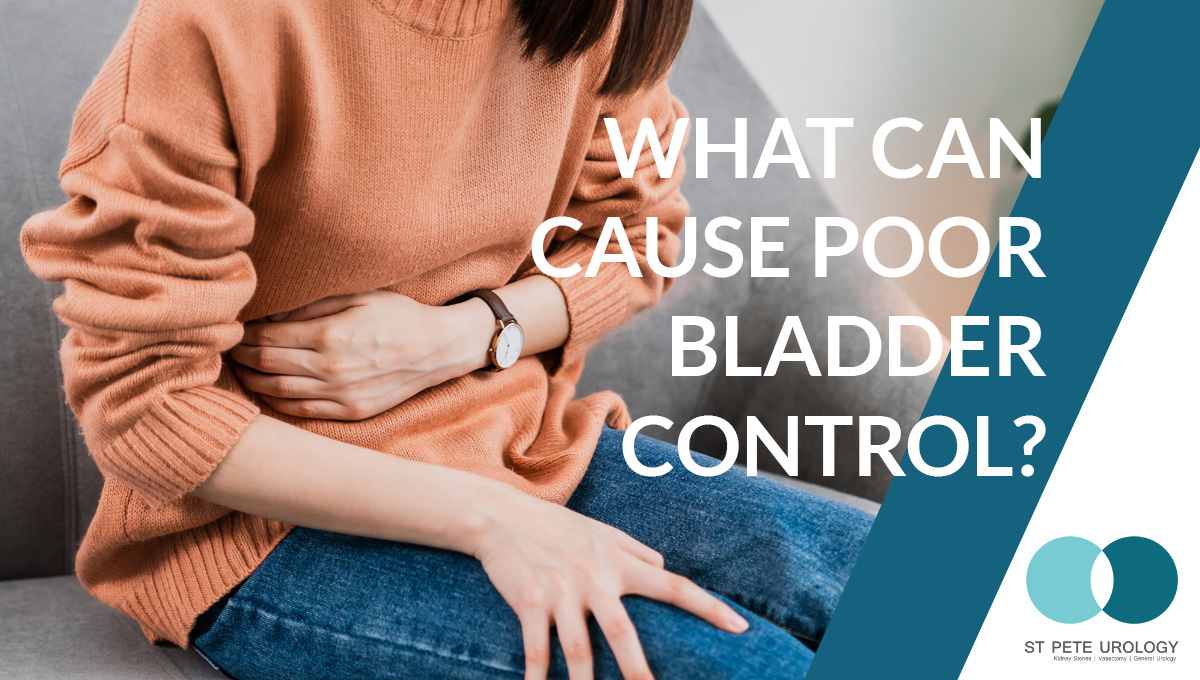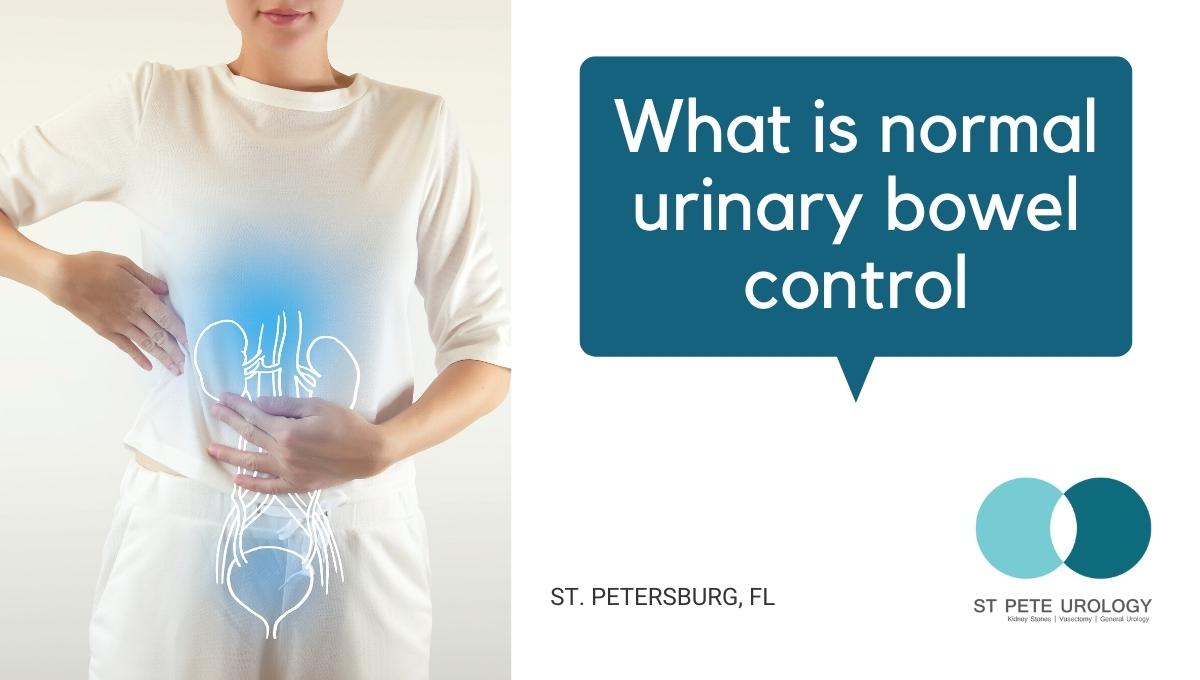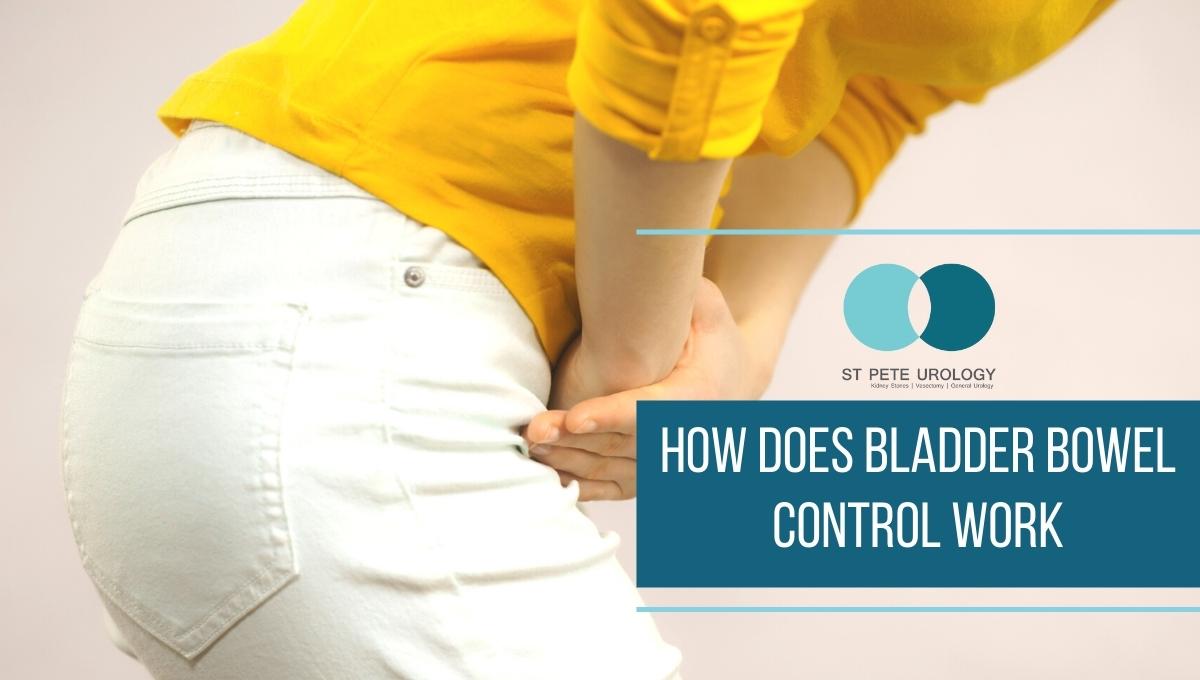Key Takeaways:
1. Overactive bladder, also known as urinary incontinence, is a condition characterized by uncontrollable urges to urinate and frequent urination.
2. Bladder training is an effective treatment option for overactive bladder that involves learning different behaviors and techniques to control the bladder and improve urinary control.
3. Visit St Pete Urology online or in St Petersburg, Florida, to learn more about comprehensive care for overactive bladder and to schedule an appointment.
Can Bladder Training Help with Overactive Bladder? Tips and Techniques
 Overactive bladder, also known as urinary incontinence, is a condition that affects millions of people worldwide, both men and women. The disorder is characterized by uncontrollable urges to urinate and frequent urination. It can be very disruptive to daily life and can negatively impact a person’s quality of life. Fortunately, bladder training is an effective treatment option for overactive bladder, and it can help improve urinary control and reduce leakage. In this article, we will explore the causes of overactive bladder, the benefits of bladder training, techniques for bladder training, and tips for success.
Overactive bladder, also known as urinary incontinence, is a condition that affects millions of people worldwide, both men and women. The disorder is characterized by uncontrollable urges to urinate and frequent urination. It can be very disruptive to daily life and can negatively impact a person’s quality of life. Fortunately, bladder training is an effective treatment option for overactive bladder, and it can help improve urinary control and reduce leakage. In this article, we will explore the causes of overactive bladder, the benefits of bladder training, techniques for bladder training, and tips for success.
Causes of Overactive Bladder
The exact cause of overactive bladder is not known, but there are several factors that may contribute to its development. One common cause is irritation or infection of the bladder. This can cause the bladder muscles to become overly sensitive, leading to frequent urges to urinate. Weak bladder muscles can also cause overactive bladder, as the muscles may not be able to contract and hold urine for long periods of time. Hormonal changes can also affect bladder function, particularly in women who are pregnant or going through menopause.
Benefits of Bladder Training
Bladder training is a treatment option for overactive bladder that focuses on changing your bladder habits to reduce frequent urination. It involves learning different behaviors and techniques to control your bladder and improve urinary control. The benefits of bladder training include improved urinary control, reduced leakage, and improved overall quality of life.
Techniques for Bladder Training
One of the main techniques used in bladder training is pelvic floor muscle training. This involves learning how to contract and relax the muscles of the pelvic floor to control and strengthen the bladder. Scheduled toilet trips are also recommended during bladder training, as this can help train the bladder to only urinate at certain intervals. Finally, limiting fluid intake can be helpful in reducing frequent urges to urinate, but it is important to stay well hydrated.
Tips for Success
In order to achieve success with bladder training, it is important to be patient and consistent. Keep a calendar to track your progress and set realistic goals for yourself, but don’t be too hard on yourself if you don’t see results right away. Bladder training can take time and it is important to be patient and give your body time to adjust to the new behaviors.
Conclusion
In conclusion, bladder training is an effective treatment option for overactive bladder that can help improve urinary control, reduce leakage, and improve overall quality of life. It involves learning different techniques and behaviors to control the bladder, including pelvic floor muscle training, scheduled toilet trips, and limiting fluid intake. With patience and consistency, bladder training can be an effective way to manage overactive bladder.
At St Pete Urology, you will find board-certified urologists in St Petersburg, Florida. We provide comprehensive care for a wide range of urological conditions, including overactive bladder, and offer a variety of treatments, including bladder training. Visit us online at www.stpeteurology.com to learn more about us and to schedule an appointment.
References:
- “Is Bladder Training Actually Helpful? – Byram Healthcare.” 11 Oct. 2022, https://www.byramhealthcare.com/blogs/is-bladder-training-actually-helpful.
- “Bladder Training | Patient Education – UCSF Health.” https://www.ucsfhealth.org/education/bladder-training.
- “Overactive Bladder (OAB): Symptoms, Diagnosis & Treatment.” https://www.urologyhealth.org/urology-a-z/o/overactive-bladder-(oab).

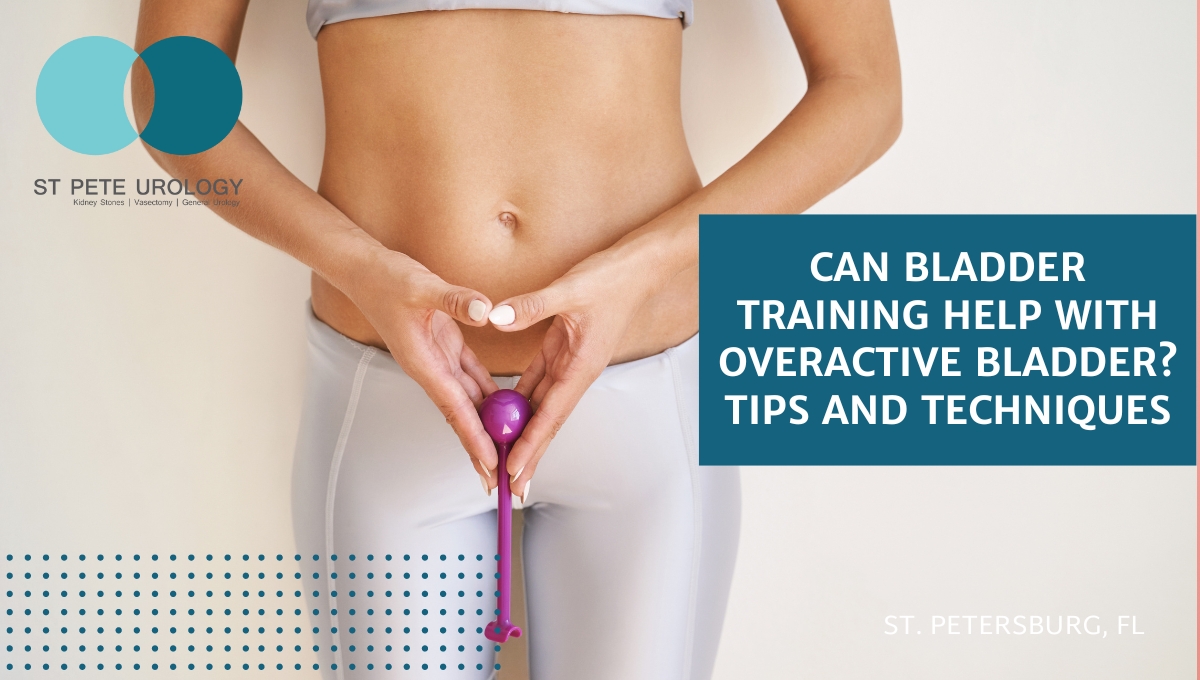

 Many people experience occasional bladder irritation, but for some, symptoms are often more frequent and bothersome. An
Many people experience occasional bladder irritation, but for some, symptoms are often more frequent and bothersome. An 
 Overactive bladder
Overactive bladder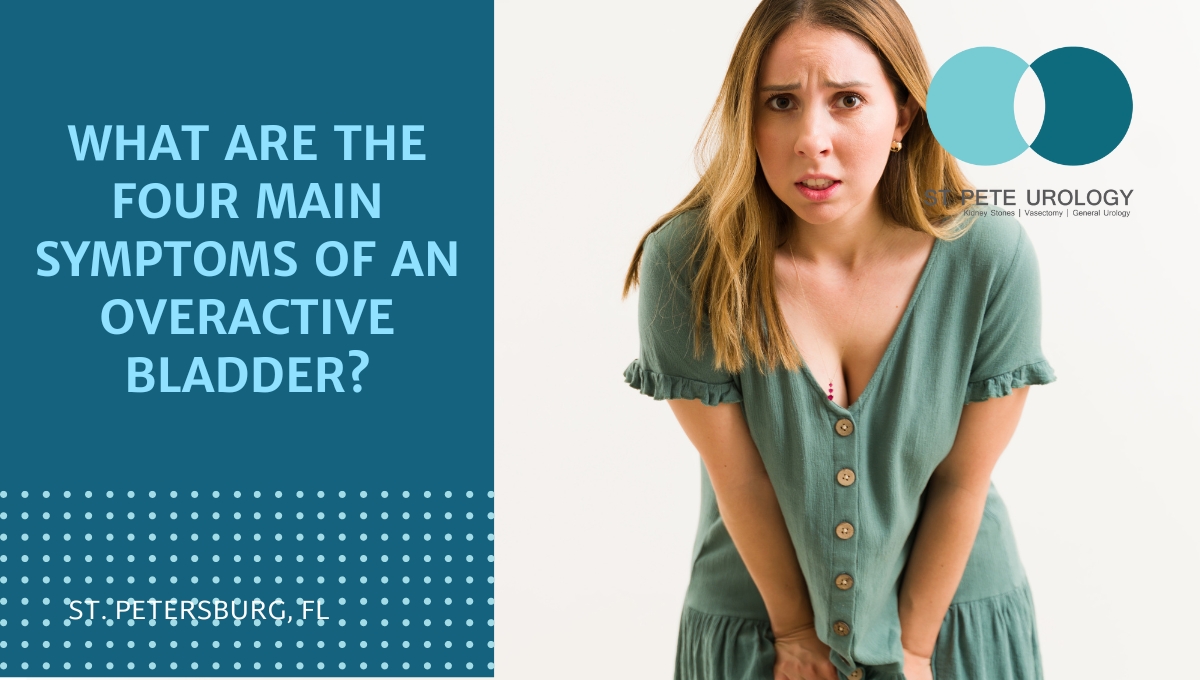
 The bladder is a hollow organ located in the abdomen that temporarily holds urine produced by the kidneys. As the bladder fills with urine, nerve signals are sent to the brain, which causes the urge to urinate. These signals from the brain coordinate the relaxation of pelvic floor muscles and urethral sphincter muscles. Then, it directs the bladder muscles to contract and expel urine through the urethra.
The bladder is a hollow organ located in the abdomen that temporarily holds urine produced by the kidneys. As the bladder fills with urine, nerve signals are sent to the brain, which causes the urge to urinate. These signals from the brain coordinate the relaxation of pelvic floor muscles and urethral sphincter muscles. Then, it directs the bladder muscles to contract and expel urine through the urethra.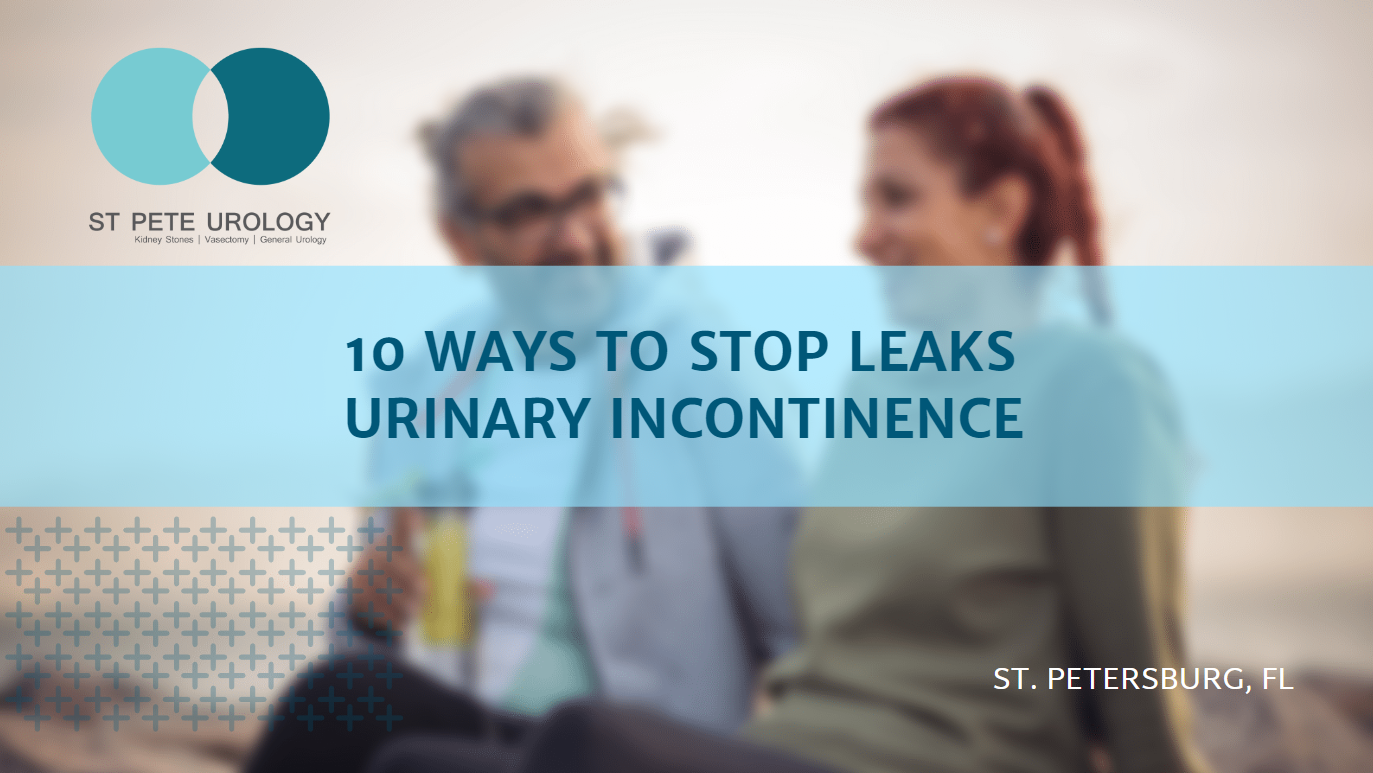
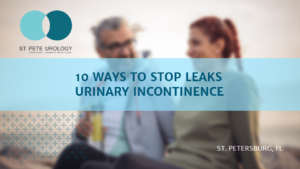 Urine leaks due to urinary incontinence can be stressful and embarrassing.
Urine leaks due to urinary incontinence can be stressful and embarrassing. 
